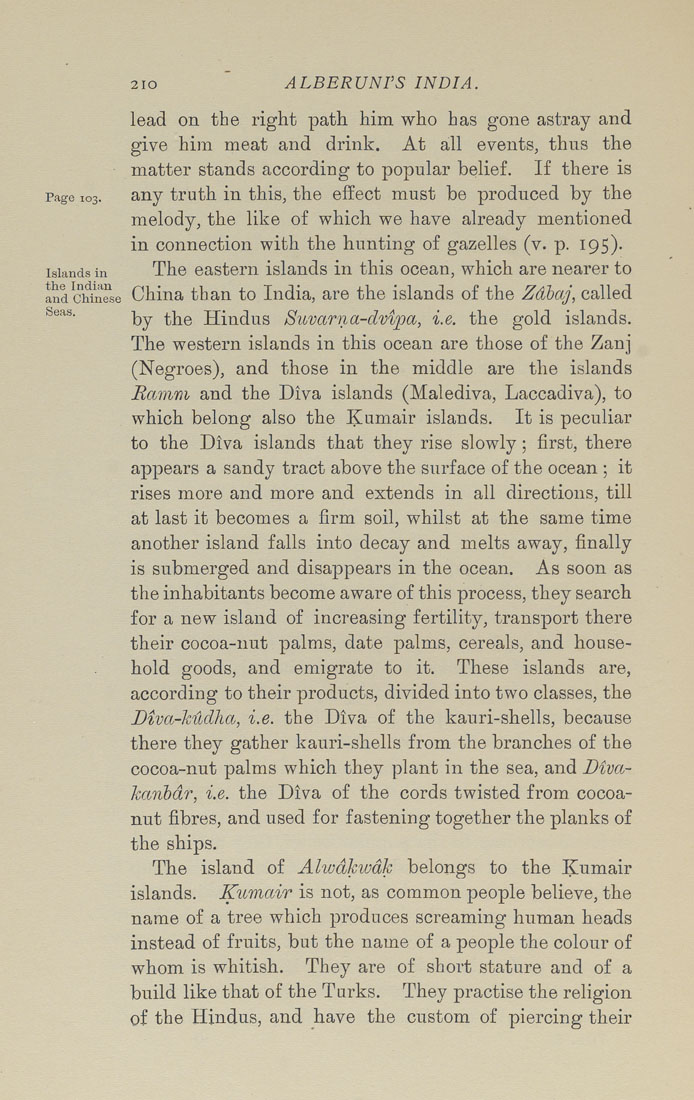Bīrūnī, Muḥammad ibn Aḥmad, Alberuni's India (v. 1)
(London : Kegan Paul, Trench, Trübner & Co., 1910.)
|
||
|
|
|
|
| Page 210 |

2IO ALBERUNPS INDIA. lead on the right path him who has gone astray and give him meat and drink. At all events, thus the matter stands according to popular belief. If there is Page 103. any truth in this, the effect must be produced by the melody, the like of which we have already mentioned in connection with the hunting of gazelles (v, p. 195). Islands in The eastcm islands in this ocean, which are nearer to and Chinese China than to India, are the islands of the Zdhaj, called ^'^^^' by the Hindus Suvarna-dvipa, i.e. the gold islands. The western islands in this ocean are those of the Zanj (Negroes), and those in the middle are the islands Bamm and the Diva islands (Malediva, Laccadiva), to which belong also the Kumair islands. It is peculiar to the Diva islands that they rise slowly; flrst, there appears a sandy tract above the surface of the ocean ; it rises more and more and extends in all directions, till at last it becomes a flrm soil, whilst at the same time another island falls into decay and melts away, finally is submerged and disappears in the ocean. As soon as the inhabitants become aware of this process, they search for a new island of increasing fertility, transport there their cocoa-nut palms, date palms, cereals, and house¬ hold goods, and emigrate to it. These islands are, according to their products, divided into two classes, the Diva-kudha, i.e. the Diva of the kauri-shells, because there they gather kauri-shells from the branches of the cocoa-nut palms which they plant in the sea, and Diva- kanbdr, i.e. the Diva of the cords twisted from cocoa- nut fibres, and used for fastening together the planks of the ships. The island of Alwdkivdk belongs to the Kumair islands. Kumair is not, as common people believe, the name of a tree which produces screaming human heads instead of fruits, but the name of a people the colour of whom is whitish. They are of short stature and of a build like that of the Turks. They practise the religion of the Hindus, and have the custom of piercing their |
| Page 210 |







